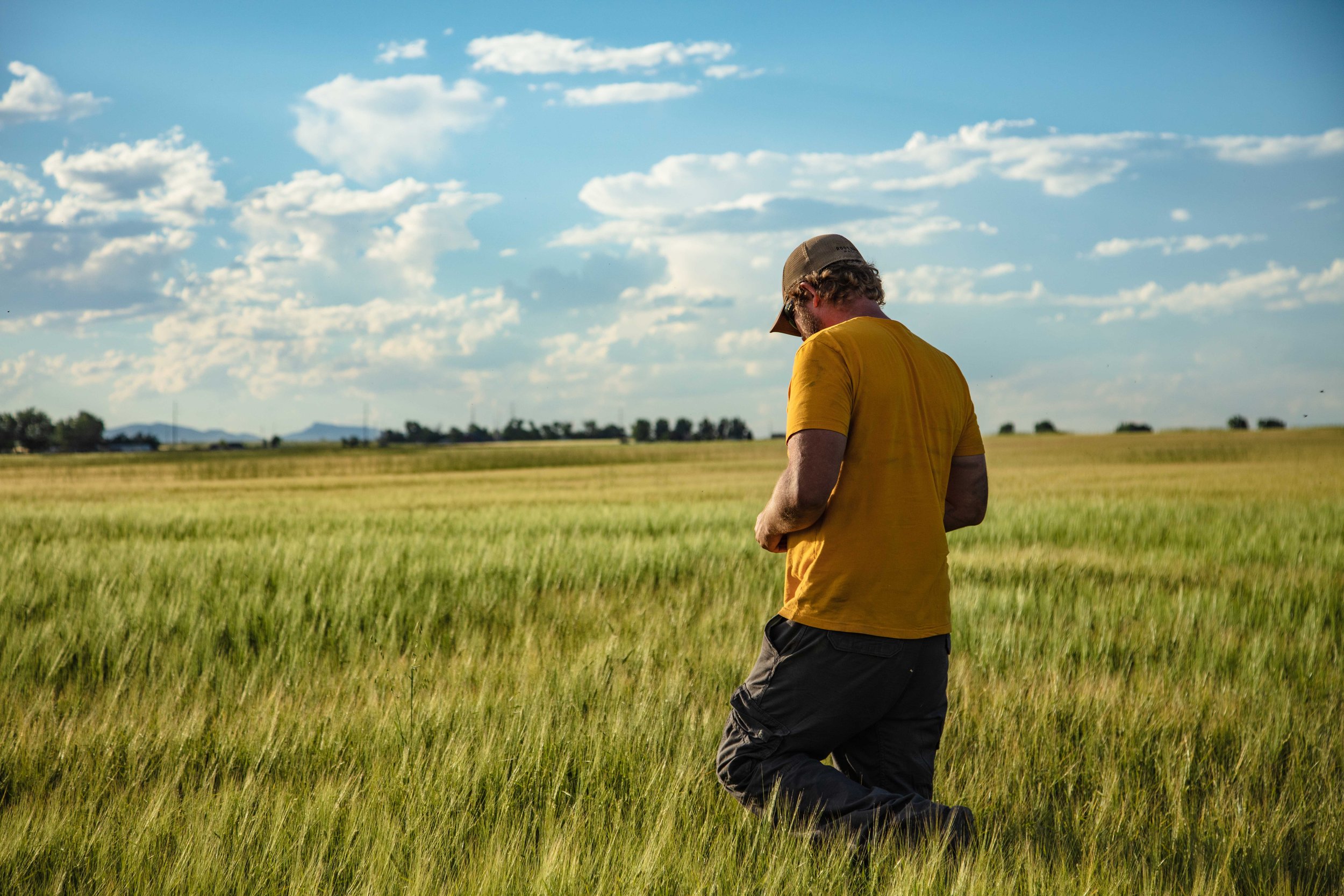Root Shoot Malting: Colorado in a Glass
Todd Olander of Root Shoot Malting
You can’t talk about wine much without focusing on the grapes: where, how, and by whom they were grown. “Great wine begins in the vineyard” is the adage we hold dear to when we speak of terroir. The same isn’t often true of beer and whiskey, however, but that’s due for a change. “That’s my hope,” says Todd Olander, fifth generation grain farmer and founder of Colorado malt house Root Shoot Malting.
With the craft beer boom of the 2010s, and the current boom in whiskey production worldwide, it’s time to give due credit to the farmers and malthouses who produce the raw materials upon which brewers and distillers rely for their particular alchemy. Barley doesn’t grow everywhere, and the malting process isn’t typically undertaken by brewers and distillers themselves. The North American Craft Maltsters Guild, a professional organization for member malt houses, was founded as recently as 2013 and currently has over 60 members. “It’s very similar to the farm to table movement,” says Olander, “of everyone having a little bit more thought about what they’re eating, and hopefully, taking that into the beverage industry as well.”
Olander Farms and Barley Production
Todd Olander in the fields
Olander’s family farm has been growing grains for the beverage industry for five generations, and is a supplier for none other than Coors. “Coors chose Colorado for a reason,” says Olander, of the particular terroir that is required to grow barley.
For all of beer and whiskey’s popularity, more states can easily grow wine grapes than can effectively grow barley, which is mostly concentrated around the northern and western U.S. states. (Idaho, North Dakota, and Montana are the biggest producers.) “Cool evenings are really important, and irrigation is also important,” says Olander, whose natural irrigation system consists of snowmelt runoff from the Rockies. “You don’t want to stress the barley plant through the growing cycle, because that increases the protein. And the arid environment is good for preventing disease, which can sometimes occur in wet environments.”
Root Shoot Malting and the Malting Process
Root Shoot Malting facility
Olander founded the malting business in 2016 as an extension of the family farm — the entire operation now falls under the Root Shoot Malting brand — and a way to fill what he saw was a gap in the supply chain for brewers and distillers. “We took multiple brewery tours throughout the 2000s and early 2010s, and really started to ask where their ingredients were coming from,” says Olander. “And that’s where the ‘aha’ moment really came from. Talking to them about their options to find local malt and there weren’t any,” he says. “It had really never occurred to us that we could fill the need for local ingredients by actually having the processing and malting on our own property.”
Malting refers to the three step process — steeping, germinating, and kilning — that not only breaks down starches in the grains and creates enzymes that will be used to convert starch into sugars during the mash process in breweries or distilleries, but also dries or roasts the grains to varying degrees to be used for specific end products. (Consider the color of pilsner versus porter; the colors of their respective malts follow suit.)
Even since beginning the malting business in 2016, the industry has already seen a shift in consumer needs. “When we started, the focus was on breweries,” says Olander, “but we’ve seen a lot of growth in distilling in the last few years. Single malt whiskey, I think, is going to be a big category in the next few years.”
Conservation Efforts and Regenerative Farming
Olander recently scored a major win in future-proofing his family’s farm. In December of 2022, Root Shoot Malting finalized a Conservation Easement with Colorado Open Lands, an agreement that permanently limits the use of its 112 acres, protecting it from oil production or property development. (You can watch a short film about his efforts, entitled “100 Year Lease,” on the company’s website.)
To that degree, Olander’s commitment to the quality of his grain is also a commitment to the quality and health of the soil, especially in light of a changing environment. “Environmental impacts have been occurring forever, but sometimes it does feel like things are getting a little bit more extreme than they have been in the past. So we’re taking a lot of steps,” says Olander, such as regenerative practices that protect the soil and its macro and micronutrients. “Resiliency in our farming process ensures that our quality of grain is going to continue to be the same that it has been,” says Olander.
Root Shoot Single Malt Whiskey
Root Shoot Whiskey
There literally isn’t a shorter distance between grain to glass than the one Olander has created with his own whiskey brand. In 2023, he founded Root Shoot Spirits as a means of shortening the supply chain to a single link, and to make a case for his own farm and malting operation. “We just really wanted to be able to connect with the consumers a little bit more,” says Olander, “It’s an expression of our farm and what we do in the malt house, and it’s really kind of showcasing our abilities,” he says.
Root Shoot Single Malt Whiskey then is arguably the best way to taste the Rockies, with its extreme micro terroir: honeyed granola, new growth forest, and alpine florals are among its tasting notes. According to Olander: “it gets described as Colorado in a glass.”




